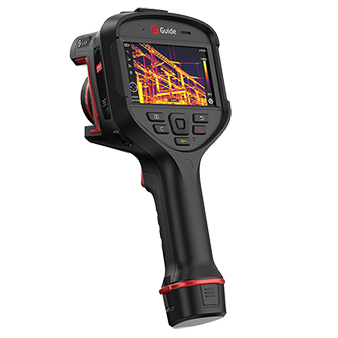Thermal Imaging Cameras: Unveiling the Invisible Heat Patterns

# Thermal Imaging Cameras: Unveiling the Invisible Heat Patterns
Thermal Imaging Cameras: Unveiling the Invisible Heat Patterns
In a world where our eyes can only perceive a limited spectrum of light, thermal imaging cameras serve as powerful tools that reveal what’s hidden in plain sight. These remarkable devices detect infrared radiation emitted by all objects and translate it into visible images, allowing us to “see” heat patterns that would otherwise remain invisible to the naked eye.
Keyword: thermal imaging cameras
How Thermal Imaging Works
Thermal imaging cameras operate on a simple yet fascinating principle: every object with a temperature above absolute zero emits infrared radiation. The cameras contain special sensors that detect this radiation and convert it into electrical signals. These signals are then processed to create a thermal image or thermogram, where different colors represent varying temperature levels.
The technology behind these cameras has evolved significantly since its military origins during World War II. Modern thermal cameras can detect temperature differences as small as 0.01°C and display them in high-resolution images with remarkable clarity.
Applications Across Industries
Building Inspection and Energy Efficiency
Thermal imaging has become indispensable in building inspections. Contractors use these cameras to identify heat leaks, moisture intrusion, and insulation deficiencies. By revealing temperature variations in walls, roofs, and windows, professionals can pinpoint areas where energy is being wasted and recommend targeted improvements.
Electrical Maintenance
In electrical systems, overheating components often signal impending failures. Thermal cameras allow technicians to scan electrical panels, transformers, and connections without physical contact, identifying hot spots before they cause equipment damage or fire hazards.
Medical and Healthcare
The medical field has adopted thermal imaging for various applications, from detecting fever in public health screenings to identifying circulatory problems and inflammation. While not diagnostic on its own, thermal imaging provides valuable supplementary information for healthcare professionals.
Search and Rescue Operations
Emergency responders rely on thermal cameras to locate missing persons in challenging environments. Whether searching through smoke-filled buildings, dense forests at night, or disaster rubble, these cameras can detect human body heat when visible light fails.
Choosing the Right Thermal Camera
When selecting a thermal imaging camera, consider these key factors:
- Resolution: Higher resolution provides more detailed images
- Temperature range: Ensure it covers your expected measurement needs
- Sensitivity: The ability to detect small temperature differences
- Features: Look for useful functions like image blending or temperature alarms
- Portability: Consider size and weight for your intended use
The Future of Thermal Imaging
As technology advances, thermal imaging cameras are becoming more affordable, compact, and sophisticated. Emerging developments include:
- Integration with smartphones and augmented reality systems
- Improved battery life and wireless connectivity
- AI-powered analysis for automatic fault detection
- Higher resolution sensors in smaller form factors
From industrial maintenance to wildlife observation, thermal imaging continues to expand its applications, giving us new ways to interact with and understand our thermal environment. As these devices become more accessible, we can expect to see even more innovative uses that harness the power of infrared vision.
Thermal imaging cameras have truly opened a new dimension of perception, allowing us to visualize the invisible heat signatures that surround us every day. Whether for professional applications or scientific curiosity, these remarkable tools continue to revolutionize how we see and interpret our world.